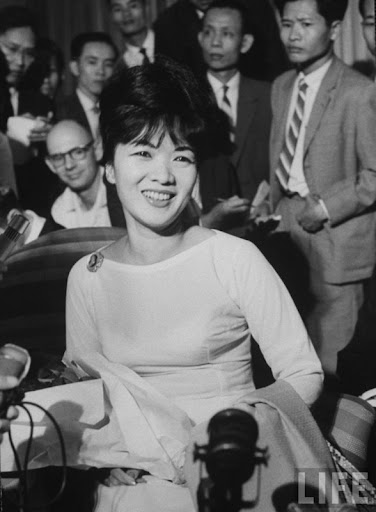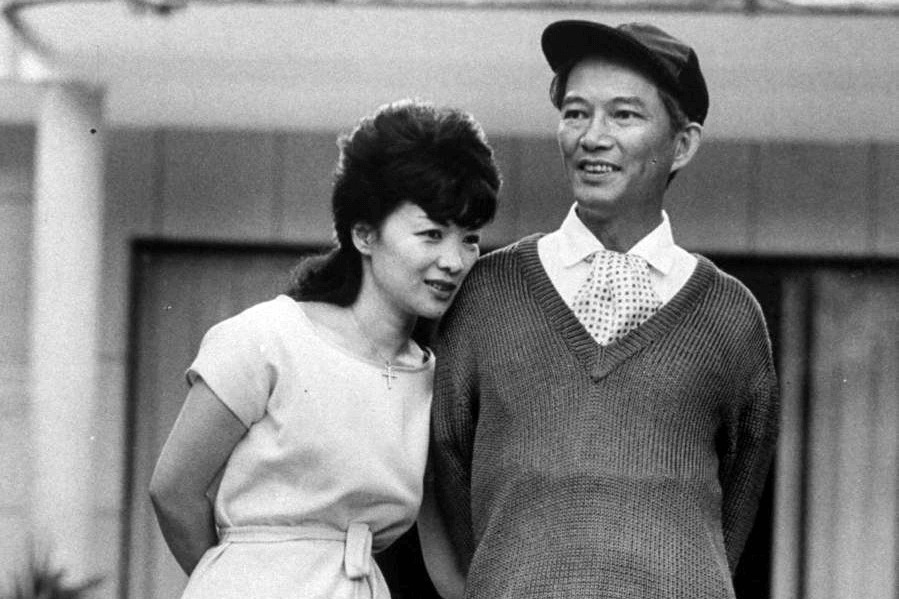

Trần Lệ Xuân
(Madame Nhu)
- Date of birth: August 22, 1924, in Hanoi
- Date of passing: April 24, 2011, in Rome, Italy
Tran Le Xuan, commonly known as Madame Nhu, was born on August 22, 1924, in Hanoi to a Northern aristocratic family.
She was the daughter of Tran Van Chuong, a renowned lawyer, and Nam Tran, a prominent figure in high society. Xuan's childhood was enveloped in wealth and a good education, preparing her for a promising future.
She was raised in an environment of traditional and refined education, where wisdom, intellect, and elegance were highly valued.
The influences from her family and her mother’s strictness shaped her strong and independent character, enabling her to become confident and resilient.
Marriage and the beginning of her political career
In 1943, at the age of 19, Tran Le Xuan married Ngo Dinh Nhu, a significant figure in the Vietnamese government.
Upon entering her marriage with Ngo Dinh Nhu, Tran Le Xuan brought all her intelligence and sharpness into her new role. This marriage was not only a union of two noble families but also a convergence of great ideas. With Ngo Dinh Nhu, she found a partner who shared many of her ideals and aspirations. In her roles as a wife and mother, Tran Le Xuan was always devoted to caring for her family, yet she never lost sight of her personal ambitions.
This marriage opened a new chapter in her life, placing her at the center of political power. She became the political advisor's wife to President Ngo Dinh Diem and began to engage deeply in political and social activities.


The period of happiness
During her years living at the Tran Le Xuan's Palace, now known as Madame De Dalat, Tran Le Xuan experienced some of the most peaceful and happiest days of her life. She once stated that it was the “Happiest Time” in her life.
Constructed in the late 1950s, this mansion was not only the family's retreat but also a symbol of luxury and power. She devoted significant effort to designing and decorating the mansion, creating a sophisticated living space that blended the finest elements of Eastern and Western architecture.
In this mansion, she had the space to nurture her personal interests, such as gardening, interior decorating, and hosting lavish parties. It was also where she could showcase her creativity and management skills.
Political career and social activities
The strong personality and leadership abilities of Tran Le Xuan placed her in important roles in society. She was not only the wife of a powerful political advisor but also a woman with significant influence in social activities.
As the President of the Vietnam Women's Union, she actively promoted reforms for women's rights and enhanced the status of women in society.
She was unafraid to fight for what she believed was right, and her determination led to many important changes.
However, Tran Le Xuan's assertiveness and strength sometimes made her a controversial figure. Some believed she had a tendency towards authoritarianism and lacked empathy for those with differing viewpoints.
Her straightforwardness and willingness to confront issues sometimes created conflicts and disagreements in both personal and professional relationships.


The exile life
The happy period did not last long. After the coup in 1963, her family lost power, and she was forced into exile abroad. Her years in exile in Rome, Italy, although no longer filled with luxury and power, were a time when she learned to adapt to a new life. She lived more discreetly and spent much of her time studying and writing.
In her memoirs and rare interviews, Tran Le Xuan shared many of her thoughts and feelings. She admitted to having made many mistakes in the past and expressed regret over her political decisions. However, she also demonstrated resilience and determination to overcome adversity, maintaining faith in her personal values and family.
Her life is a clear testament to the complexity and multidimensionality of human beings, as well as an important part of the modern history of Vietnam.
Fashion & Feminism
Fashion is not only a means of personal expression but also a way to communicate and establish social influence. Tran Le Xuan, commonly known as Madame Nhu, used fashion to shape her personal style and convey powerful messages about power and feminism. With her refined choices in clothing, she not only stood out as the first lady but also became a fashion icon of her era.
Tran Le Xuan was renowned for her fashion style that harmoniously blended traditional and modern elements. She often appeared in elegant boat-neck ao dai. Choosing the boat-neck ao dai was a bold decision for Tran Le Xuan. At that time, traditional ao dai typically featured high, modest collars, reflecting the seriousness and grace of Vietnamese women.
By changing this design, Tran Le Xuan asserted her confident and bold personal style, breaking traditional fashion rules to affirm her identity and power. Her boat-neck ao dai were often made from luxurious fabrics with intricate patterns, blending traditional beauty with modern style, creating an image that was both alluring and powerful.
Fashion not only allowed Tran Le Xuan to shine but also served as a tool for her to assert power and advocate for feminism. In an era when women were often overlooked in political matters, she used her clothing to establish her status. Her elegant and powerful outfits helped convey a message about women's leadership potential.
The influence of Tran Le Xuan on modern Vietnamese fashion remains evident. Her style has inspired many generations of Vietnamese women in how to dress and express themselves. She demonstrated that fashion can be a powerful tool in the struggle for feminism, and that women can use personal style to assert their status in society. The lessons about feminism derived from her style are still relevant today, as women become increasingly aware of their rights and roles in society.
Through the elegance and power of her fashion, Tran Le Xuan not only asserted her unique personality but also left a proud legacy of feminism and style for future generations.
